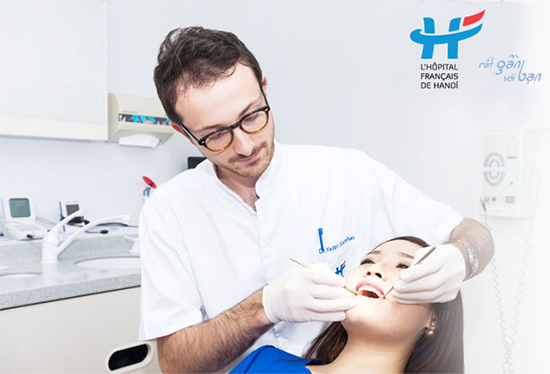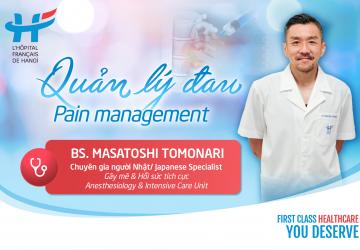Knowledge - Mon, 12/09/2024 - 11:09
Dental Implants
Last update 12/09/2024 - 11:11

What is implant?
Dental implant is a method of implanting a titanium artificial root in the bone of the jaw and covering it by crown in order to replace the missing teeth.
It allows to replace one or more teeth without affecting other teeth, and offers a fixed prosthesis for maximum comfort.
Single missing tooth can destabilize the entire mouth. If not replaced, it is the first step toward the process of loosening teeth or multiple missing teeth.
If you are concerned, you must, as holders of implants, observe an extremely rigorous dental hygiene and regularly carry out checks.
When will we place an dental implant?
An implant can be introduced, either immediately after tooth extraction or after healing of the bone and gum.
The surgery is often simple and mildly painful. It is done under local anesthesia as for the treatment of a cavity.
The fixed prothesis is performed after the bone around the implant is solidified (within 2 to 6 months). Under certain conditions, temporary prosthesis may be needed after implant placement
Indications and contra-indications
To put an implant, it is necessary that the volume and quality of the jaw bone are sufficient. These parameters are usually evaluated by your dentist based on your CT scan films. If there is not enough bone, bone graft is needed to increase its volume. And importantly the surrounding teeth and gums are healthy.
A medical questionnaire will help rule out any contra-indications: irradiation of the face, high risk of infective endocarditis (infection of a heart valve caused by bacteria in the mouth).
Relative contra-indications include poor hygiene, smoking, uncontrolled diabetes, anticoagulant medications ...
The surgical placement of implants may seem impressive. Yet it is a relatively quick intervention and the recovery progresses well in the vast majority of cases.
Placing an implant in dental clinic

Placing implants requires an rigourously aseptic operation. It is realized in an operation bloc delicated for implant placement.
1. Treatment planning
The primary purpose of implant insertion is to support the intended prosthesis in order to achieve maximum esthetics and function. So it is the plan of future prosthesis that will guide the placement of implants.
For simple prosthesis plan (one or two missing teeth), treatment is relatively easy. In complicated cases, further analysis may be necessary, requiring various "impressions" or "guide appliances" to envisage and forecast the position of future prothesis on models and/ or in the mouth.
Computerized treatment planning can also be utilized in certain situations.
In addition, your dentist will conduct dental and oral examination to assess the condition of the intended area and check for any cavaties or gingivitis involving adjacent teeth to jointly address.
2. Surgical intervention plan
Once the plan of future prosthesis is agreed upon, your implantologist must consider the conditions to place implants to support future prosthesis.
Your implantologist also analyzes the bone volume to determine whether or not a bone graft is needed. Some advanced pre-implant surgeries can provide sufficient bone before the implant surgery as:
- Surgery to expand crest or apposition which helps increase the thickness, volume and correct the contour of the crest of lost bone.
- Intra-sinus bone surgery to increase bone height, thereby making implant placement possible.
The length and diameter of each implant are also determined at this time. A properly prosthetic plan and well-planned surgery will guarantee a predictably functional and aesthetic outcome.
3. Putting the implant
Implant surgery is realized under local anesthesia. Your implantologist makes a small incision in the gum and open the gum to access to the bone site where the implant placement is planned. He will drill multiple overlapping holes of different diameters to create a bigger hole in the bone and place the implant.
A screw is put in to cover the implant and the surgical site is sutured.
4. Suturing the surgical site
After the implant is inserted, the interventional site must be closed carefully to allow the implant to fully integrate with the jawbone under the best conditions.
Two options for closing the site are available:
Option 1: The implant fully under the gum
The gum is sutured back in its original position. The implant is then put completely under the gum and well protected. If this option is chosen, it is necessary to reopen slightly the gum in two to six months later to expose the head of implants for realization of the prosthesis.
Option 2: Without burying implants
The gum is sutured and the head of implant is left emerged. Overtime the gum around the implant will heal. This technique avoids a second surgery to open the head of the implant. However, the implant is less protected during healing. This option is only for the most favorable cases.
5. Time frame for the realization of prothesis on implants
In general, it is expected that an implant is well integrated with the bone then the prothesis is introduced (in two to six months).
Thanks to the evolution of implantology, this time period tends to decrease. Sometimes it is possible to put a provisional prosthesis immediately after the implant is inserted. This allows to maintain esthetics while you wait for the placement of prosthesis, especially for anterior teeth.
In order to make the definitive prosthesis, your implantologist will have to take impression, try it in the mouth and permanently screw or seal it on the implant.
Dental implant maintenance
As natural teeth, strict hygiene and regular follow-up are necessary to maintain healthy dental implants.
Implant complications
Infectious complications: Like natural teeth, implants can also be present with gum recession. Progressive bone loss around the implant (as peri-implantitis) is ussually caused by inadequate cleaning.
Mechanical complications are rare. It can be due to the implants or screws used to fix the prothesis on the implant are broken themselves.
Prevention from complications
To prevent inflammation, careful cleaning of the junction between the gum and the implant, at least twice a day with toothbrush and interdental cleaners in combination with professional cleaning at dental clinic following your dentist’s recommendation is necessary.
Mechanical complications can be prevented by regular occlusion checks. Your dentist will lightly grind the prosthesis on the implant and the adjacent teeth if needed.
For any inquiry regarding this procedure, please contact us at (84-24) 3577 1100 or send us an inquiry here



